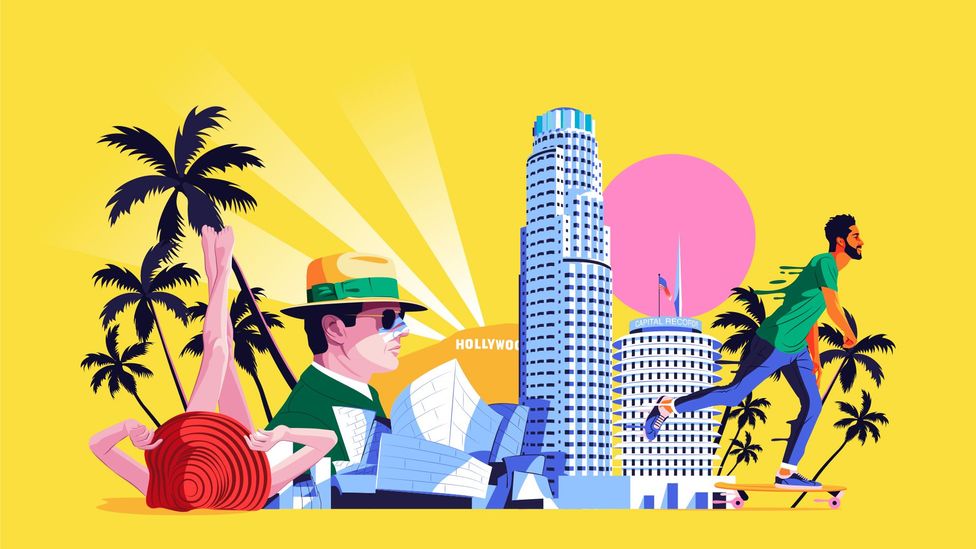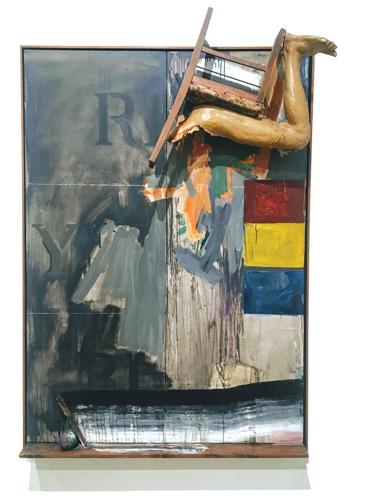
Dada was an art movement that started in Switzerland in late twentieth century. The movement was founded by a group of exiles from many countries, including Germany, France, and Russia, who sought refuge in a neutral country like Switzerland. Hugo Ball was one of the founders of Cabaret Voltaire. This group was dedicated to the promotion of ideals of culture, and the arts. The movement is still a key part of modern art today.
Art
Dada, an early 20th-century art movement, began in Zurich (Switzerland) at the Cabaret Voltaire. It eventually spread to New York City, Paris, and other cities. While Dadaist activities continued in Europe and the United States until the mid 1920s, their activities were centered in Paris. This article will look at the history and main activities of Dadaists. The early centers of the movement were in Switzerland, Cabaret Voltaire and France. They were active between 1915 and the middle of 20th century.
Dada artists displayed their disdain of rationality in Zurich by creating a sense that their works were dislocated. They used strategies that removed the artist's hands from the work, such the repositioning of an artist's photograph. Duchamp, for example, called his snow shovel In Advance of a Broken Arm. Picabia however, called his sparkplug Portrait of an American Young Girl in a state of Nudity. These artists sought integration of art and human life to challenge industrialization.

Movement
The Dadaists created provocative readymades in a variety of media, with a recurring theme of war and violence. They sought new forms of art resistance, and resemble the radical left. These artists were often proponents of violence and nationalism. Dadaists encourage the deconstruction and dismantling of moral and ethical concepts. They were not the only ones to do so. Since then, their ideas have permeated the art world.
Dadaists were frequently associated with male artists. But women made significant contributions to this movement, too. Famous female Dadaists include: Suzanne Duchamp, Elsa von Freytag-Loringhoven, Emmy Hennings, Clara Tice, and Ella Bergmann-Michel. Despite some criticisms, the movement's lasting legacy has influenced many artists throughout 20th-century art.
Influence upon other art movements
The early 20th century saw artists embrace new art forms and explore the boundaries of art. While creating art in new forms, the Dadaists also tried to find ways to make it less traditional and free from traditional forms. Dadaists were able to use found objects and the laws or chance to question the nature of art. They were known for their humor, clever turns and willingness to question the status of the quo.
Artists who became associated with Dada included Hugh Ball, Tristan Tzara, Hans Richter, and Johannes Baader. Many of the greatest Dada artworks, including a famous Marcel Duchamp-inspired mural, were created by these artists. Beatrice Wood, Kurt Schwitters, and John Heartfield were just a few of the other artists who had an influence on Dada.

Origins of dada
The term 'Dada’ is ambiguous. Some claim it came from the Romanian word 'da-da', which is repeated repeatedly for effect. However, the most popular explanation for the origin of the term is that they came from a group consisting of artists who met up at the Cabaret Voltaire. There they met with writers, musicians, and artists. Jean Arp was also a member. Marcel Janco, a renowned Swiss painter, was also a member. These artists and writers came together to create their own unique art.
Dada, which was officially established in Zurich in 1916, quickly spread to North America and Europe. Its members were motivated primarily by their disapproval of bourgeois values as well as their hopeless experience in World War I. They rejected conventional forms of artistic creation and focused instead on chance and spontaneity. In art, they rejected the traditional mediums of painting, drawing, and collage in favor of found-object construction and photomontage.
FAQ
What is Tik Tok pop culture like?
The answer is yes This is not only for teenagers. These short videos can be shared with friends and family to share their emotions, thoughts, and life moments.
Every day, the app is used by over 200,000,000 people worldwide. Every day, this number increases by millions.
This makes TikTok an incredible opportunity for brands to connect with consumers and build meaningful relationships.
Many influencers have established huge followings on TikTok. These creators create original content that engages audiences across the globe.
So what are waiting for? Here are four ways you can take advantage of this trend.
-
Create Viral Content
-
Engage Influencers
-
Use Visuals Effectively
-
Get creative with your audience
What is pop culture of today?
Pop Culture is the art of the 21st Century. It includes all types of entertainment including music, film TV, videogames, fashion and advertising. Neil Postman, an author, coined the term "pop" in his 1985 book Amusing Ourselves. Pop refers to mass communication that uses formulaic and cheap tricks to create an illusion or spontaneity.
He did however point out that most people don't feel genuine enjoyment because they are trained to seek media experiences which make them feel superior. He also said that this kind of cultural expression contributed to the decline of critical thinking skills in young adults.
Pop culture can also refer to popular culture and consumerism.
What is the popular music culture?
Popular Music Culture can take many forms.
Popular music culture is defined by its use of certain styles of music (e.g., rock, jazz) and lyrics. It also includes the influence of visual media (e.g., film, television and fashion) on artists' careers.
It's also about how fans interact with their favorite artists.
One aspect of popular music culture is the rise of "superstars," artists who have achieved fame, fortune, and status for themselves.
These superstars often transcend genres and become cultural icons, and their popularity has influenced the evolution of popular music itself.
The popular music culture also includes:
* The rise of recording technology - from acoustic instruments to electric guitars and microphones;
* The invention of the record player and the radio;
* The birth of rock 'n roll.
* The introduction TV and film
* The advent of MTV and VH1;
* The creation of the internet.
Who first coined the term Pop Music
Frank Zappa created it. Pop music was his preferred style.
He said that he wanted music to appeal to everyone. He called his music "pop music".
Zappa also created the phrase "You know it's POP when..." which means that something is really popular if many people enjoy it. Michael Jackson's Thriller record is one of the most successful.
Zappa's definitions of pop music are different than the current. Pop music can include all music. However, in the past, only certain genres of music were considered to be pop.
What is the origin of pop music?
It was an accident. The mistake that caused the first song to be written was when someone accidentally knocked a piano over while playing on New Years Eve 1920.
The recording company loved what they heard so they decided to release the single.
This was the first single to be recorded.
Since then, pop music has become the most popular form of musical entertainment today.
How did pop culture develop?
Technology was the driving force behind popular culture's development. It evolved as people became mobile. Mass communication was made possible by the invention of radio. This allowed for the rise of television and the birth of the internet.
Computers were first used at home by people who became familiar with computer games. These games were originally played on consoles like Sony Playstation 3 or the Nintendo Wii. These games can be downloaded online for free. Consequently, many young people play video games instead of watching TV.
Video games are very popular with children and teenagers. You can play them alone or with your friends online. Call Of Duty and Grand Theft Auto games are very violent. Some parents are worried about their children playing these video games. Others find it thrilling to watch what happens when one of their characters dies.
Music videos are another way that pop culture influences youth. They are a great way to learn about celebrity news and the latest trends. They are very popular with young people. It's obvious that music is a major part of our lives.
Many artists use special effects in music videos to enhance their songs. Rappers may use makeup and wigs to make themselves more appealing. Others put themselves through extreme physical demands to show off their bodies. Many singers perform while wearing costumes.
There are so many options for music today. You can listen to whatever you like. However, this isn’t always good news. Music can sometimes encourage violence. People are often angry when they hear certain songs or words. Sometimes they even commit crimes.
50 Cent is a recent example of this. One line in his song Get Rich Or Die Trying says: "I'm going after a motherfucker / But I don't know how, but I might." This song was thought to mean that he would murder someone. He was threatened by a man who called him. 50 Cent changed his lyrics. It now only says: "I will shoot a bitch/ I don’t understand why but I just might."
Popular culture is essential. It's important that we understand how it affects and impacts us. If we don’t know how it affects our lives, we won’t have the ability to protect ourselves from its negative consequences.
How can we prevent the dangers of pop-culture?
We must first recognize when pop music is influencing our lives. Then we need to make sure that we're not influenced by it. These are some ways to avoid bad influences.
-
Avoid watching Game Of Thrones or other violent shows.
-
Don't spend time surfing the Internet. Read books instead.
-
Reduce your television viewing. Spend your time doing something healthy.
-
Be careful about what you say online. It is impossible to delete comments after they are posted.
-
Check that websites you visit remain safe. Before entering personal information, ensure that they are checked.
-
Don't allow anyone to pressure you into dangerous actions.
If you see yourself becoming addicted to pop culture, talk to an adult who will help you. You can either call your local library (800-THELOOST), or the National Center For Missing & Evacuated Children (1-808-THELOOST).
Statistics
- Less than a decade later, that statistic rose to 90% (Dager, n.d.). (socialsci.libretexts.org)
- In 1987, US films captured 56% of the European film market. (socialsci.libretexts.org)
- According to Kathryn Sorrells (2013, pp. 142-144), there are several ways that we can become informed consumers of popular culture. (socialsci.libretexts.org)
- Latinos represent roughly 19% of the U.S. population. (npr.org)
- For example, the term hater meaning someone who strongly undermines or criticizes others, often due to pathetic jealousy, likely emerged from hip hop culture, such as the term playa hateras, used by influential rapper Biggie Smalls as early as 1995. (simplicable.com)
External Links
How To
What is pop cultural in movies?
Popular Movies Culture includes all aspects entertainment such as books, magazines, newspapers and television programs. It also includes websites, blogs, social media, apps, gaming, and other media.
Movies can be classified into different types: comedy/drama, horror, action/adventure. Fantasy, science fiction. Romance, thriller. Animation.
Movie plots generally follow a pattern of predictable events that conclude with a satisfying resolution.
This formula will determine the success of a movie.
Here are some common plot points:
-
A protagonist who has to overcome obstacles in order achieve his/her goal.
-
The antagonist is the one who opposes protagonist;
-
A moral dilemma that demands the protagonist to make an informed decision.
-
A twist ending that transforms everything
If your story does not fit in one of these categories you might need to reevaluate or outline your idea before you write.
These questions are particularly important to consider:
-
How do I establish my setting?
-
What does my protagonist want?
-
Why should readers care about my story?
-
Where is my life going?
-
Who is my main protagonist?
-
Is there any conflict?
-
What is the climax?
-
What is my resolution?
-
Are you happy with the ending?
-
Do I introduce new characters?
-
Are there multiple settings for my story?
-
Do you have subplots?
-
Are there major themes?
-
Can I tell a complete tale in just one chapter?
-
Do I use dialogue effectively?
-
Is my language clear?
-
Does my vocabulary match the context?
-
What if I have used active voice, instead of passive?
-
Are there spelling or grammar errors?
-
Is my grammar correct?
-
Are there too many adjectives?
-
Do you have any suggestions?
-
What's my first impression when I'm finished editing?
Your job is more than just to write a book. It is also about getting it published.